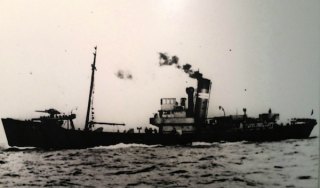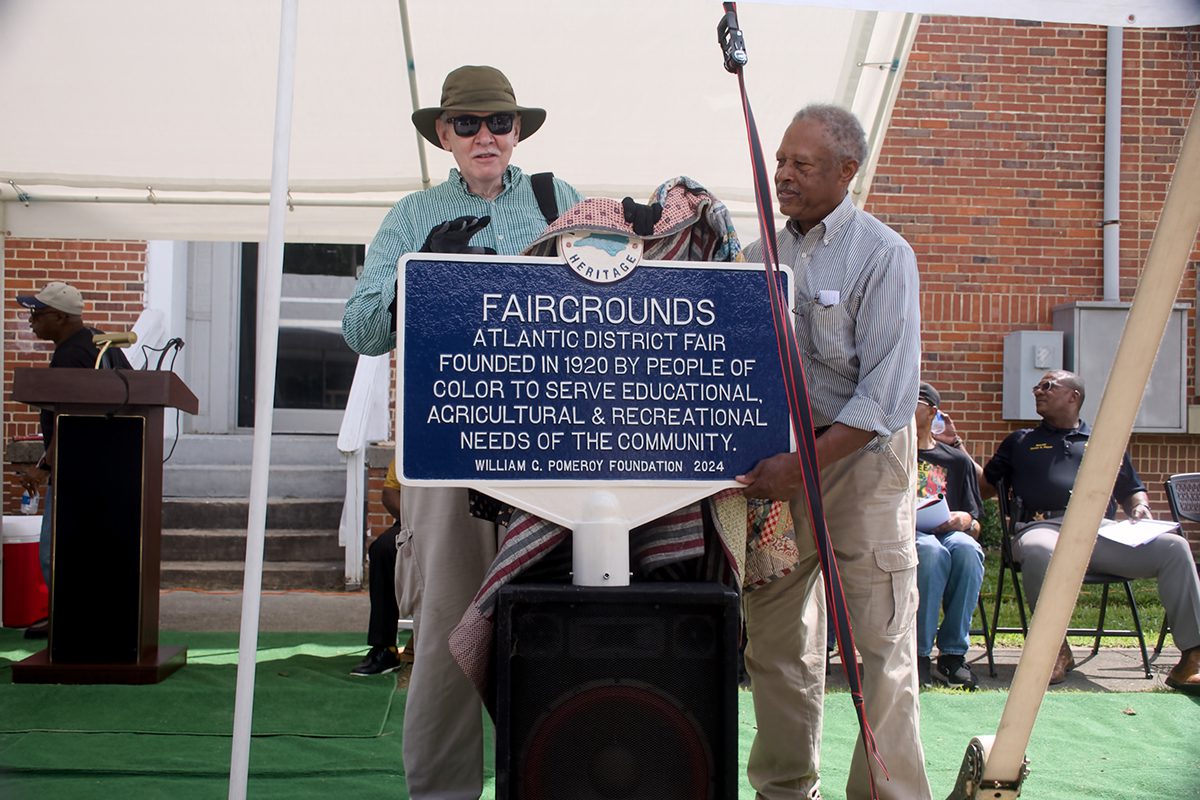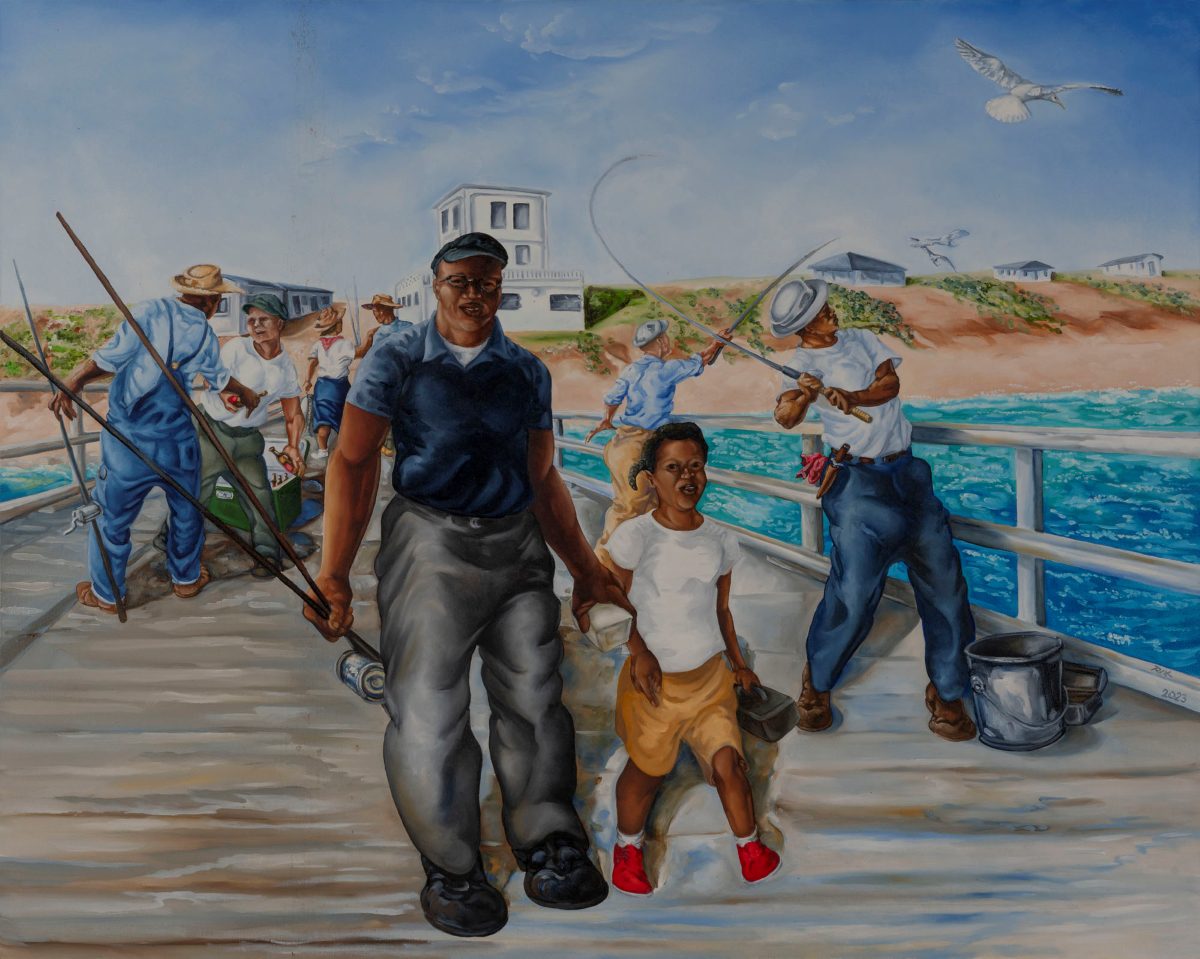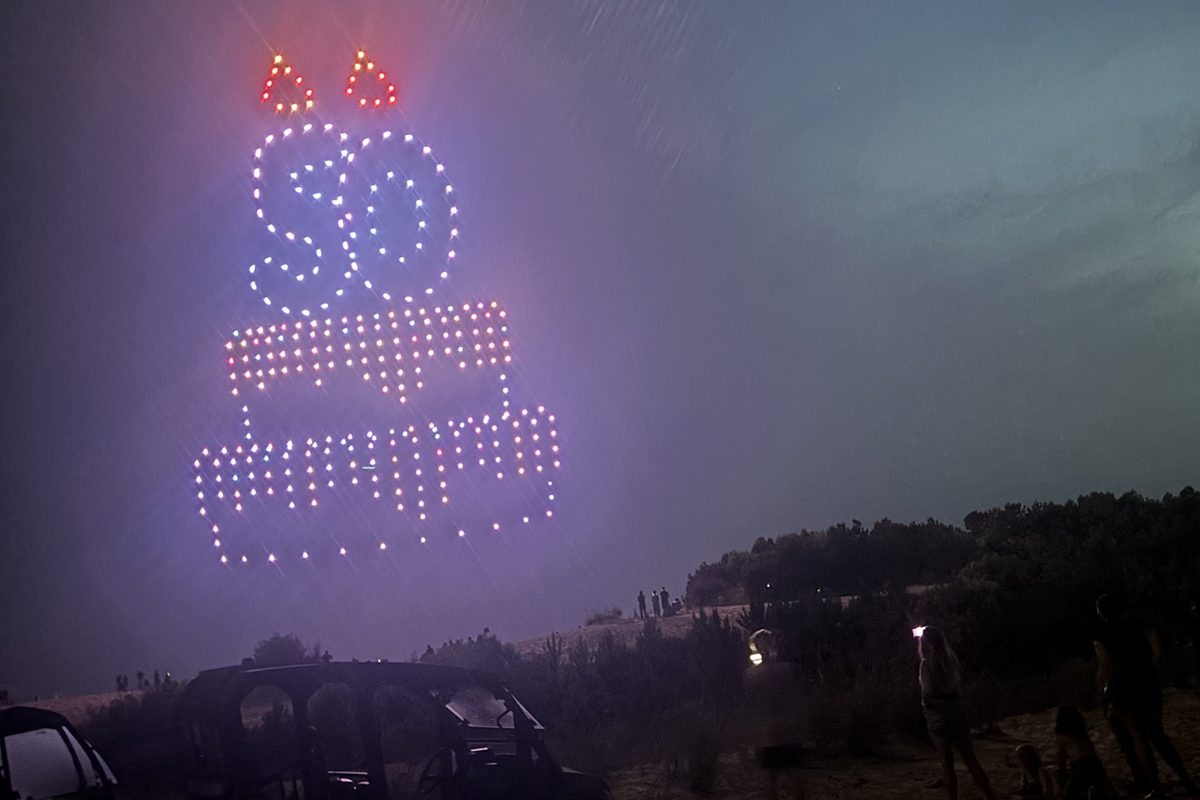
OCRACOKE – Surrounded by live oaks and red cedars and enclosed by a picket fence on a quiet road in the village lie four graves. There are lots of small, well-cared-for family graveyards on Ocracoke Island, but this one is different. Above it waves a red and white banner – the flag of England. The story behind this cemetery is dramatic and heart-rending, and it continues to this day.
World War II came to the United States in the early months of 1942, when German U-boats began torpedoing merchant ships along the Atlantic Seaboard. North Carolina’s Outer Banks were particularly hard hit. During the first four months, 60 ships were blown up along the North Carolina coast. The Navy was at first unable to adequately protect the shipping lanes, so they requested support from Great Britain. In response, the Royal Navy sent a flotilla of 24 antisubmarine trawlers to help end the destruction. The trawlers had, before the war began, been seagoing, commercial fishing vessels. The men on them, most of whom had been merchant seamen, had joined the Royal Navy and gained experience in fighting U-boats.
Supporter Spotlight
Among the trawlers was the H.M.T. (His Majesty’s Trawler) Bedfordshire. Built in 1935, the former fishing vessel was 170 feet long. It had been sold to the British Admiralty when the war began and was now equipped with a 4-inch, quick-fire deck gun, a .303 caliber Lewis machine gun and 80-100 depth charges. It was commanded by Lt. R.B. Davis with a crew of three other officers and 33 men.
The flotilla left England in early February 1942, stocked for an 18-day trip, but they encountered rough, stormy weather along the way. One ship, the Northern Princess, was lost in the heavy seas. The remaining vessels were late reaching their destination, finally arriving in Newfoundland in early March. They made their way south to the Brooklyn Navy Yard in New York for repairs and restocking. The H.M.T. Bedfordshire then sailed to its new home port, Morehead City, North Carolina, a base for antisubmarine operations. By April 1942, its crew was busy patrolling the waters from Cape Lookout to Norfolk, Virginia.
Wahab Howard, an Ocracoker who was, at the time, the manager of the Ocracoke Electric and Light Co., crossed paths with one of the Bedfordshire officers, Sub-Lt. Thomas Cunningham, in Norfolk. According to a story later told by Wahab’s widow, the men shared a table and conversation in a restaurant there. During the meal, Wahab noticed Cunningham’s unique gold watch and ring.
A month later, while the Bedfordshire was docked in Morehead City, Sub-Lt. Cunningham encountered another Ocracoke resident, Jack Willis. Willis later recalled, “I was with my father in Morehead City when I saw Cunningham. He was in a drug store pretending to shave off his beard with an electric razor. I remember he had a thick black beard.”
Aycock Brown, a civilian special investigator for the Office of Naval Intelligence, also met Cunningham during that spring. In late April he was called to identify four bodies from a British tanker, which had been torpedoed and to oversee the burial. He visited the Bedfordshire, which was ashore at the time in Morehead City, to request British flags to drape over the caskets, and ended up sharing a few rounds of rum and a long conversation with Sub-Lt. Cunningham. Before he left he was given not four but six “Union Jack” British flags.
Supporter Spotlight
Officers Davis and Cunningham, along with their crew, sailed back out of Morehead City to Cape Lookout. They were patrolling 40 miles southeast of the Cape when, just before midnight on May 11, the Bedfordshire was spotted by the German submarine U-558. The submarine, captained by Kapitänleutnant Günther Krech, fired two torpedoes, but they missed their target. He fired again. After 36 seconds he heard a detonation and saw the trawler’s stern rise high out of the water. It disappeared, sinking to the bottom and taking all its crew with it.
Three days later, on the morning of May 14, two bodies were pulled out of the surf by Coast Guardsmen from Ocracoke Station. They were transported to a small building behind the Coast Guard Station, where Wahab Howard and Jack Willis identified Sub-Lt. Cunningham. Howard remembered his watch and ring, and Willis his black beard.
“I remember going down to the station to use the telephone,” recalled Willis.”They brought in two men who had washed up on the beach. They had them on the back of a truck. When they pulled up the canvas, I recognized one of them. He had on a turtleneck and looked pretty normal. His beard was still coal black …”
Aycock Brown, the special investigator who had spent an evening of conversation over glasses of rum with Cunningham, was called in to help identify the British sailors and oversee funeral arrangements. He agreed that the first body was that of the sub-lieutenant and determined that the second was that of Stanley Craig, the ship’s telegraphist. Since there had been no distress signals or reports of an attack on the Bedfordshire, Brown’s identifications were questioned when he called headquarters. It was not till May 16 that the ship was officially acknowledged missing in action and presumably sunk.
As Brown prepared to build coffins and have the sailors buried, he discovered that wood was hard to come by on the island. He located two coffin-shaped sink boxes used by hunters to hide in for duck and geese hunting. According to one report, they had been abandoned, but Elsie Ballance recalled that her father, Elisha Ballance, had donated one of the boxes.
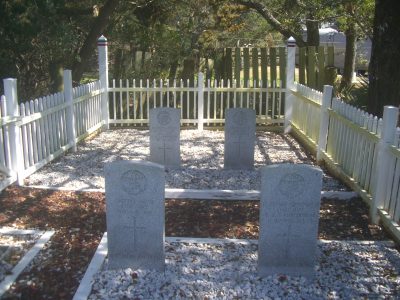
“Papa had what they called an old scow flat,” she said. “They came to him and asked him if they could have it to bury those sailors in. He gave it to them, saying that he had boys in the service and only hoped that if it was needed that somebody would do the same for him some day.”
The Williams family donated a small plot of land next to their own cemetery to bury the sailors. Amasa Fulcher, a lay leader of Ocracoke’s Methodist Church, was asked to conduct the service. The Coast Guard provided pallbearers, and the British sailors were buried with honors in the sink boxes. Draped over them were the two extra British flags that Cunningham had given Brown less than two weeks before.
A week later, two more bodies were pulled from the ocean by the crew of a Coast Guard patrol boat. They could not be identified, but from their uniforms it was clear that they had come from the Bedfordshire. They were buried next to Cunningham and Craig in coffins made with wood donated by an islander who had been saving it to make an outhouse.
That fall, Cunningham’s widow was distressed to learn that there had been no Catholic service for her husband, who had been a devout Catholic. Aycock Brown was notified and again he came to Ocracoke to oversee a second service. Four white wooden crosses were provided by the U.S. Navy and a Roman Catholic Navy chaplain came from Cherry Point to preside alongside the pastor of Ocracoke’s Methodist Church. There were full military honors, including a long line of Coast Guard and Navy officers and enlisted personnel, a gun salute and the sounding of taps by a bugler. There has been an annual service overseen by the Coast Guard ever since.
Later, two other sailors from the Bedfordshire were found, besides those buried at Ocracoke. One body, identified as that of Seaman Alfred Dryden, washed ashore near Swan Quarter, where it was later buried. Dryden was later moved to a cemetery in Creeds, Virginia, and given a full military service. Another washed ashore and was buried on Hatteras Island. None of the other 29 British servicemen were found.
The submarine that downed the Bedfordshire, the U-558, was bombed by Allied Forces on July 20, 1943. It sank and most of the crew were killed. L. Vanloan Naisawald, author of the book “In Some Foreign Field,” tracked down the survivors after the war was over. The German captain, Günther Krech, was one of five men who escaped in a lifeboat, were picked up by the British, and held as prisoners of war until freed after the war.
The wooden markers put in place by the Navy in 1942 were replaced in 1983 with regulation British gravestones. The originals were stored under a building for years, but in 2005 they were incorporated into a memorial near the cemetery with the names of all the British sailors who died. Last year the Commonwealth War Graves Commission, based in England, took over the maintenance of the tiny cemetery which is “leased in perpetuity” to England and considered British soil.
While the British Cemetery and the annual services honor all the men who died on May 11, 1942, there is a special connection between Cunningham and the island of Ocracoke. Not only had he met two Ocracokers and donated the flags which were draped over the graves, but his widow, Barbara came to know some of the Ocracokers and stayed in touch. Two Ocracoke women, Fannie Pearl Fulcher and Elsie Garrish, visited the Cunninghams in England. Cunningham’s son, born in October 1942, five months after the sinking, and named after his father, has come to Ocracoke to honor his father on more than one occasion. Last year, he attended the 75th anniversary of the sinking of the Bedfordshire.


